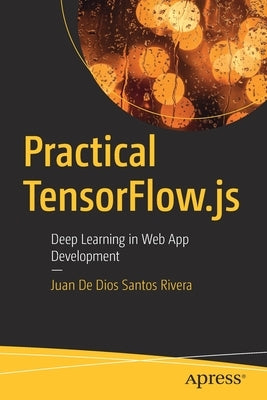Description
Chapter 1
Welcome to TensorFlow.js
Headings
● What is TensorFlow.js?
-
● TensorFlow.js API
○ Tensors
○ Operations ○ Variables
● How to install it
● Use cases
Chapter 2
Building your First Model
Headings
● Building a logistic regression classification model
● Building a linear regression model
● Doing unsupervised learning with k-means
● Dimensionality reduction and visualization with t-SNE and d3.js
-
● Our first neural network
Chapter 3
Create a drawing app to predict handwritten digits using
Convolutional Neural Networks and MNIST
Headings
● Convolutional Neural Networks
● The MNIST Dataset
● Design the model architecture
● Train the model
● Evaluate the model
● Build the drawing app
● Integrate the model within the app
Chapter 4
"Move your body!" A game featuring PoseNet, a pose estimator model
Headings
● What is PoseNet?
● Loading the model
● Interpreting the result
-
● Building a game around it
Chapter 5
Detect yourself in real-time using an object detection model trained in
Google Cloud's AutoML
Headings
● TensorFlow Object Detection API
● Google Cloud's AutoML
● Training the model
● Exporting the model and importing it in TensorFlow.js
-
● Building the webcam app
Chapter 6
Transfer Learning with Image Classifier and Voice Recognition
Headings
● What's Transfer Learning?
● MobileNet and ImageNet (MobileNet is the base model and ImageNet is the training set)
● Transferring the knowledge
● Re-training the model
-
● Testing the model with a video
Chapter 7
Censor food you do not like with pix2pix, Generative Adversarial
Networks, and ml5.js
Headings
● Introduction to Generative Adversarial Networks
● What is image translation?
● Training your custom image translator with pix2pix
-
● Deploying the model with ml5.js
Chapter 8
Detect toxic words from a Chrome Extension using a Universal
Sentence Encoder
Headings
● Toxicity classifier
● Training the model
● Testing the model
-
● Integrating the model in a Chrome Extension
Chapter 9
Time Series Analysis and Text Generation with Recurrent Neural
Networks
Headings
● Recurrent Neural Networks
● Example 1: Building an RNN for time series analysis
-
● Example 2: Building an RNN to generate text
Chapter 10
Best practices, integrations with other platforms, remarks and final
words
Headings
● Best practices
● Integration with other platforms
● Materials for further practice
● Conclusion
Author: Juan de Dios Santos Rivera
Publisher: Apress
Published: 09/19/2020
Pages: 303
Binding Type: Paperback
Weight: 1.01lbs
Size: 9.21h x 6.14w x 0.69d
ISBN13: 9781484262726
ISBN10: 1484262727
BISAC Categories:
- Computers | Artificial Intelligence | General
About the Author
Juan De Dios Santos Rivera is a machine learning engineer who focuses on building data-driven and machine learning-driven platforms. As a Big Data Software Engineer for mobile apps, his role has been to build solutions to detect spammers and avoid the proliferation of them. This book goes hand-to-hand with that role in building data solutions. As the AI field keeps growing, developers need to keep extending the reach of our products to every platform out there, which includes web browsers.

